Tamron SP 85 mm f/1.8 Di VC USD
3. Build quality and image stabilization
In the photo below the Tamron SP 85 mm f/1.8 Di VC USD is positioned next to the already elderly Canon EF 85 mm f/1.8 USM.
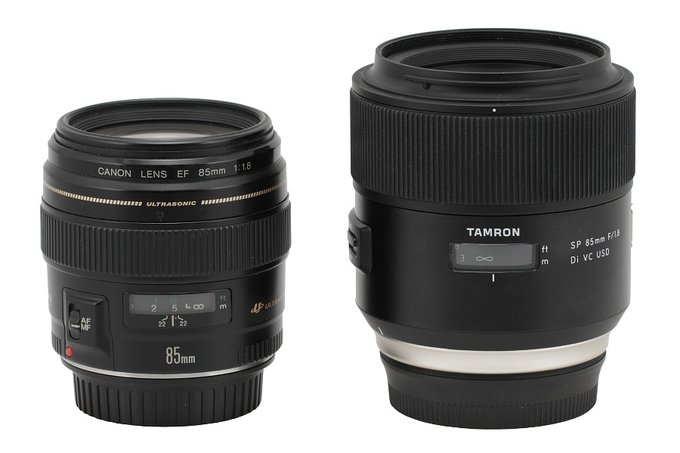 |
Please Support UsIf you enjoy our reviews and articles, and you want us to continue our work please, support our website by donating through PayPal. The funds are going to be used for paying our editorial team, renting servers, and equipping our testing studio; only that way we will be able to continue providing you interesting content for free. |
- - - - - - - - - - - - - - - - - - - - - - - - - - - - - - - - - - - - - - - - - - - - - - - -
The tested lens starts with a metal bayonet mount which surrounds contacts and a rear element, 31 mm in diameter. That element is immobile and hidden inside the casing almost 1.5 cm deep. The area close to it is nicely blackened and matted but there is a small slit between its edge and the tube so the whole construction is not entirely sealed. As the element doesn’t move we really don’t understand why such a slit was necessary.
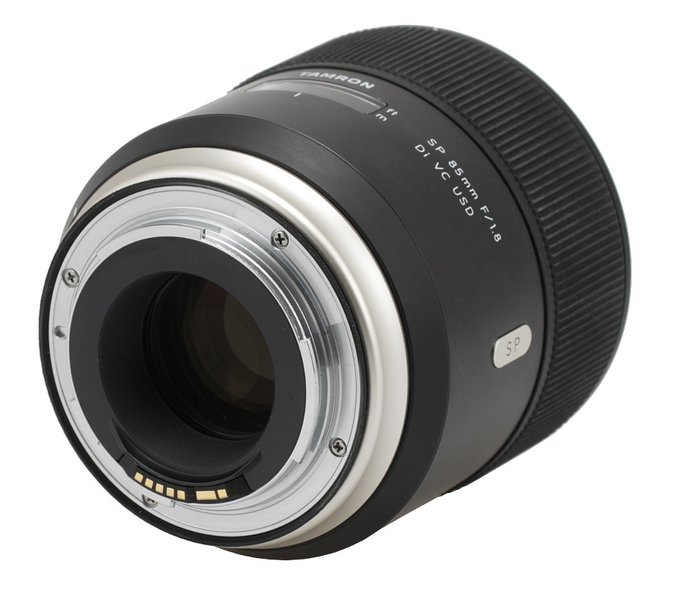 |
A rubber gasket joined with a silvery, metal ring which doesn’t move is the first part of the proper lens casing. That ring turns into a smooth, black fragment of the barrel with a white dot which makes an alignment with a camera easier. Above that mark you see a window with a distance scale expressed in feet and meters. Unfortunately the lens doesn’t feature any depth of field scale.
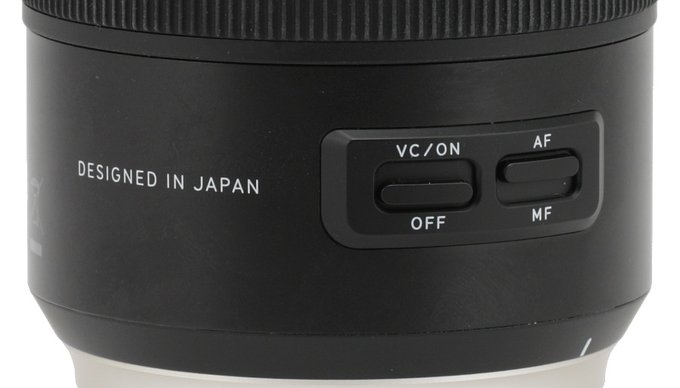 |
Looking from above on the right side of the window you get the name and parameters of the lens and a silver SP badge. On the left side there is a focusing mechanism mode switch (AF/MF) and a stabilization switch (VC ON/OFF). A bit further on there is information that the lens was designed in Japan but, contrary to the 1.8/35 and the 1.8/45 models, produced in China. A comparison between inscriptions informing about those facts is interesting in itself. The “DESIGNED IN JAPAN” text font is big and clearly visible because white, so in stark contrast with the lens’s body. The “MADE IN CHINA” inscription is written with a lot smaller font; it is thrown casually among other information about the lens and the text is gray so not especially visible. One question comes immediately to mind: if the producer wanted to save on production costs and moved it to China why the 1.8/85 model has to be actually more expensive than the SP 1.8/35 and the 1.8/45 lenses, produced in Japan? Especially as designing of an 1.8/35 instrument seems to be more difficult than designing the 1.8/85 one…
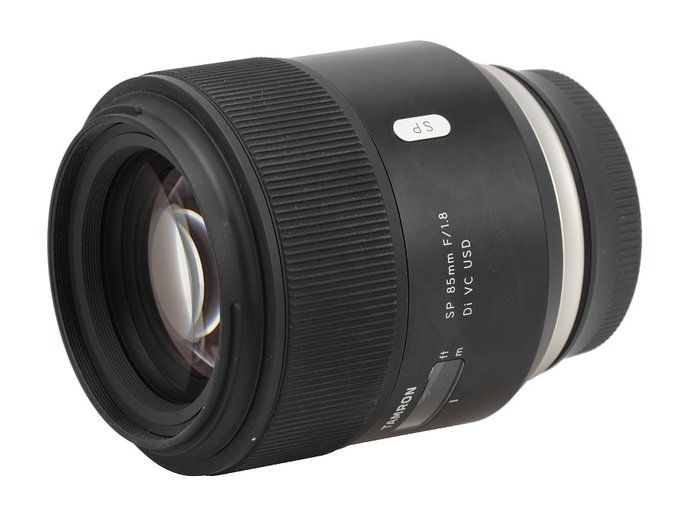 |
A manual focus ring, as wide as 33 mm, is the next part of the lens. It is completely covered by rubber armour, works evenly and is well-damped. Running through the whole distance scale takes a turn through an angle of 110 degrees. It is a sensible value, allowing you quite precise settings.
Behind the focus ring you also find a hood mount inside which there is a non-rotating filter thread, 67 mm in diameter.
The front element is over 52 mm in diameter; it hides a bit inside the black, ribbed tube and it doesn’t move.
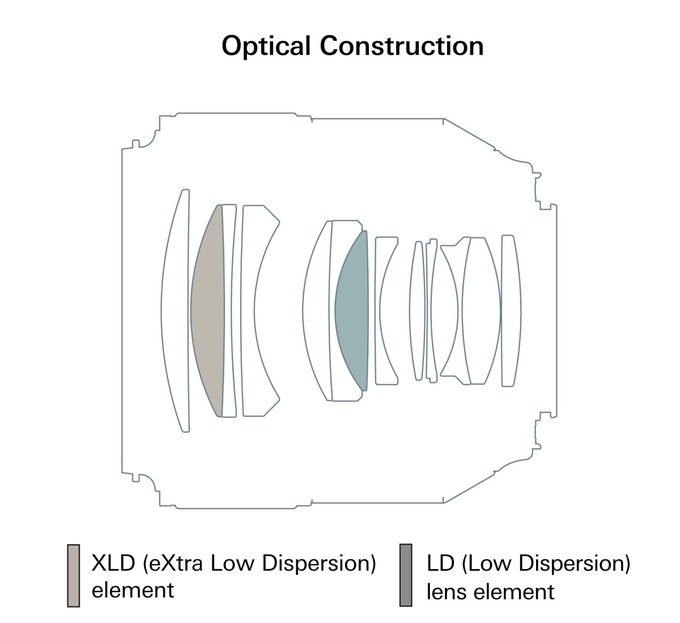 |
The optical construction of the Tamron SP 85 mm f/1.8 Di VC USD consists of 13 elements positioned in 9 groups. Among them you can find two low dispersion elements, one made of LD (Low Dispersion) and the other made of XLD (eXtra Low Dispersion) glass. Inside there is also a round aperture with nine diaphragm blades which can be closed down to f/16 at the maximum.
The elements are covered by special coatings (Extended Bandwidth & Angular-Dependency and BBAR – Broad-Band Anti-Reflection) which are to guarantee high transmission and good performance against bright light. Additionally the outer elements boast hydrophobic coating.
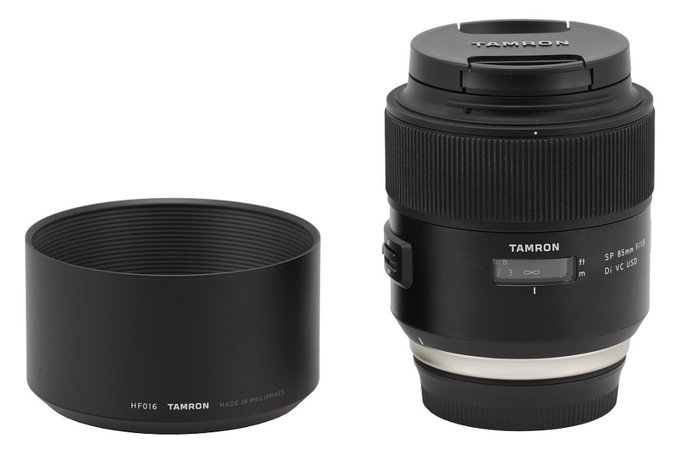 |
Buyers get both caps and a hood in the box; still it’s a pity the producer didn’t add any kind of pouch or case.
Optical stabilization
The Canon and Nikon versions of the Tamron SP 85 mm f/1.8 Di VC USD are equipped with an image stabilization unit which declared efficiency amounts to 3.5 degrees. In order to check that claim we took several dozen photos at every exposure time ranging from 1/100 to 1/3 of a second with the stabilization switched on and off. Then we determined a percentage of blurry photos at every exposure time and presented it as an exposure time graph, expressed in EV (with 0 EV being the equivalent of 1/80 of a second).
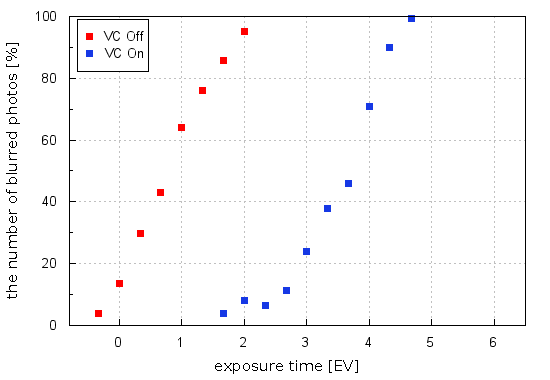
The maximum distance between both curves reaches a bit below 3 EV and it is a result slightly lower than that declared by the producer. It also leaves us slightly dissatisfied. A stabilization unit in a lens of such quality should be as efficient as 3.5-4.0 EV. Still it’s worth mentioning here that the tested device is perhaps the only stabilized full frame portrait lens currently available on the market so it compares favourably to its rivals anyway.






